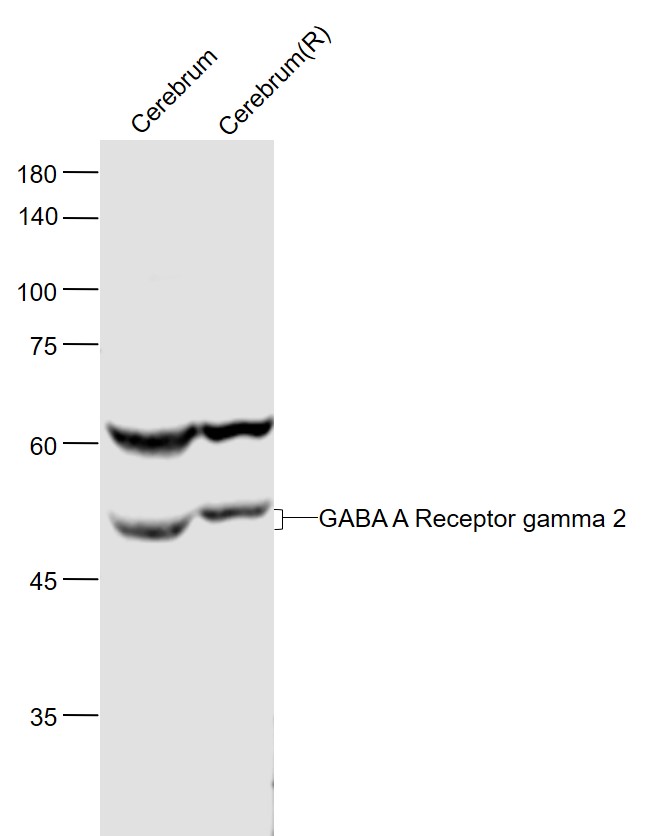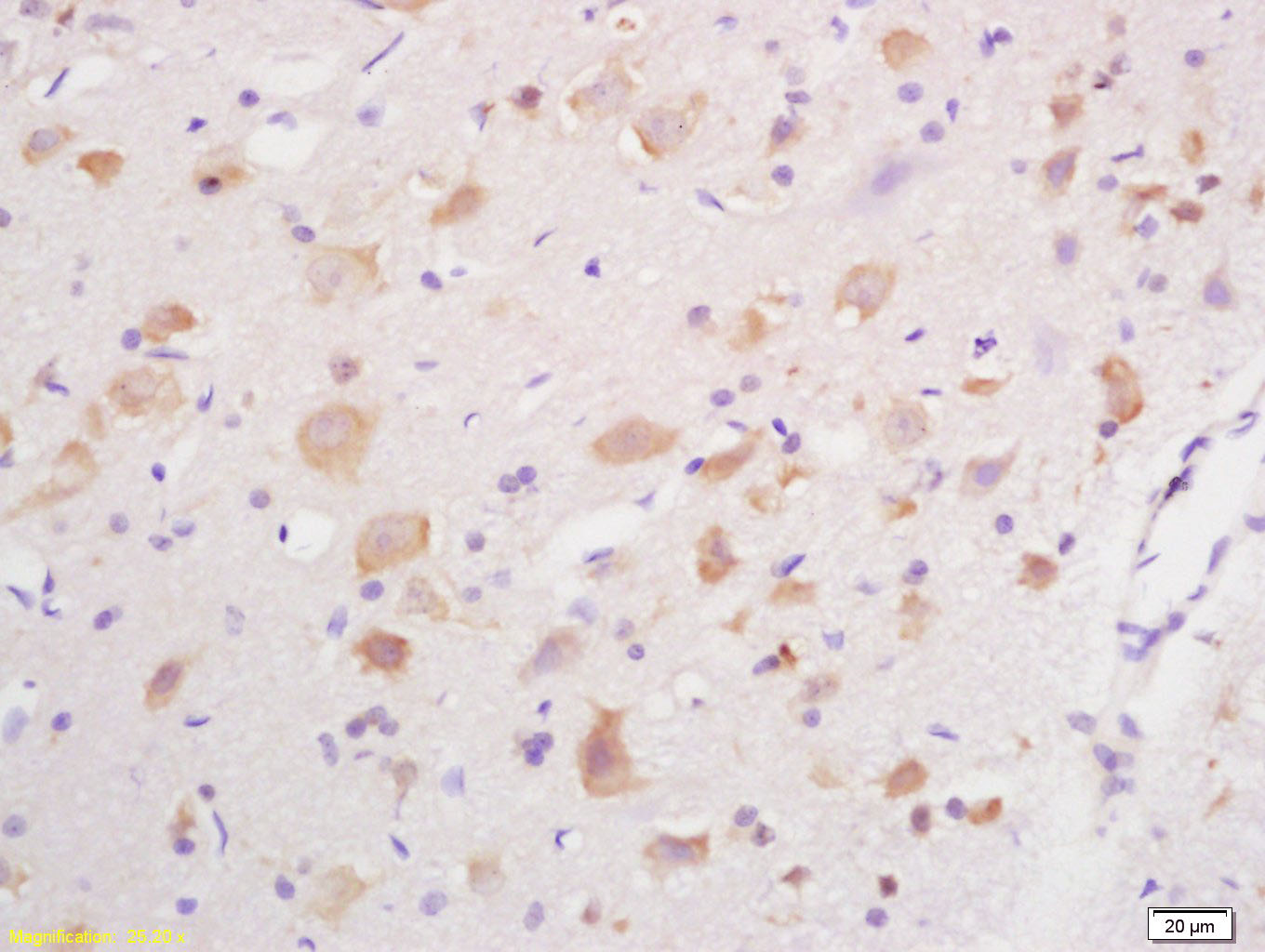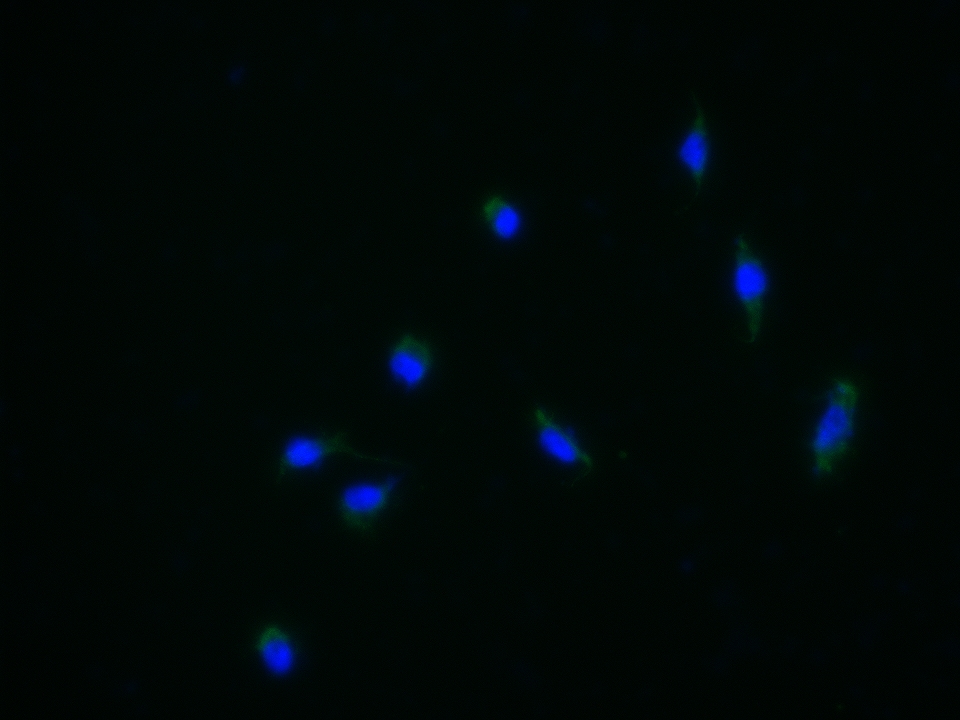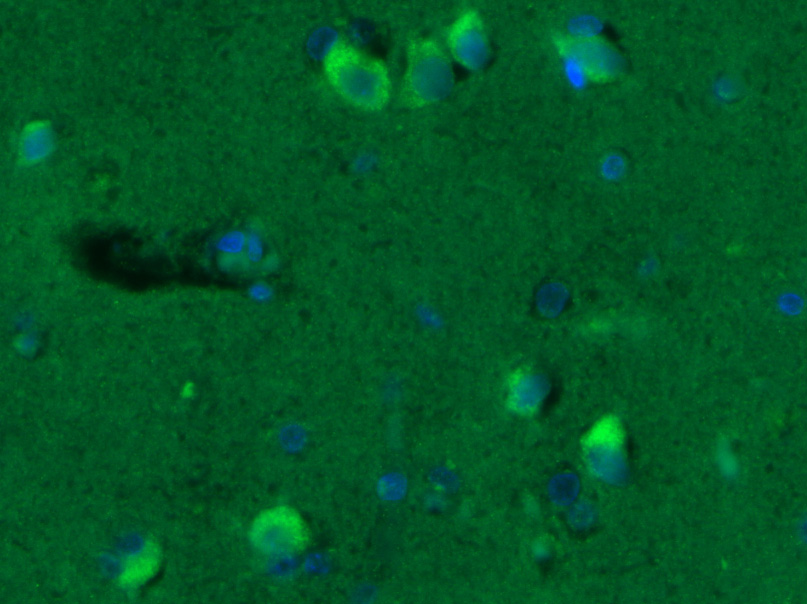
Rabbit Anti-GABA A Receptor gamma 2 antibody
GABRG2; CAE 2; CAE2; ECA 2; ECA2; GABA(A) receptor subunit gamma 2; GABA(A) receptor subunit gamma-2; GABRG 2; GABRG2 antibody Gamma aminobutyric acid (GABA) A receptor gamma 2; Gamma aminobutyric acid A receptor gamma 2; Gamma aminobutyric acid receptor
View History [Clear]
Details
Product Name GABA A Receptor gamma 2 Chinese Name γ氨基丁酸γ2受体/GABAA Rγ2抗体 Alias GABRG2; CAE 2; CAE2; ECA 2; ECA2; GABA(A) receptor subunit gamma 2; GABA(A) receptor subunit gamma-2; GABRG 2; GABRG2 antibody Gamma aminobutyric acid (GABA) A receptor gamma 2; Gamma aminobutyric acid A receptor gamma 2; Gamma aminobutyric acid receptor gamma 2 subunit; Gamma-aminobutyric acid receptor subunit gamma-2; Gamma-aminobutyric-acid receptor gamma-2 subunit; GBRG2_HUMAN; GEFSP 3; GEFSP3. GABA A Receptor γ2; GABA A Receptor γ 2; GABA A Receptor γ-2; GABA A Receptor-γ2; literatures Research Area immunology Neurobiology The cell membrane受体 Immunogen Species Rabbit Clonality Polyclonal React Species Human, Mouse, Rat, (predicted: Dog, Pig, Cow, Horse, ) Applications WB=1:500-2000 ELISA=1:5000-10000 IHC-P=1:100-500 IHC-F=1:100-500 ICC=1:100-500 IF=1:200-800 (Paraffin sections need antigen repair)
not yet tested in other applications.
optimal dilutions/concentrations should be determined by the end user.Theoretical molecular weight 51kDa Cellular localization The cell membrane Form Liquid Concentration 1mg/ml immunogen KLH conjugated synthetic peptide derived from human GABRG2/GABA A Receptor gamma 2: 41-140/475 <Extracellular> Lsotype IgG Purification affinity purified by Protein A Buffer Solution 0.01M TBS(pH7.4) with 1% BSA, 0.03% Proclin300 and 50% Glycerol. Storage Shipped at 4℃. Store at -20 °C for one year. Avoid repeated freeze/thaw cycles. Attention This product as supplied is intended for research use only, not for use in human, therapeutic or diagnostic applications. PubMed PubMed Product Detail GABA, the major inhibitory neurotransmitter in the vertebrate brain, mediates neuronal inhibition by binding to the GABA/benzodiazepine receptor and opening an integral chloride channel.
Function:
GABA, the major inhibitory neurotransmitter in the vertebrate brain, mediates neuronal inhibition by binding to the GABA/benzodiazepine receptor and opening an integral chloride channel.
Subunit:
Generally pentameric. There are five types of GABA(A) receptor chains: alpha, beta, gamma, delta, and rho.
Subcellular Location:
Cell membrane.; Cell junction, synapse, postsynaptic cell membrane; Multi-pass membrane protein. Cell membrane; Multi-pass membrane protein.
Post-translational modifications:
Palmitoylated by ZDHHC3/GODZ; which may affect presynaptic clustering and/or cell surface stability.
DISEASE:
Defects in GABRG2 are the cause of childhood absence epilepsy type 2 (ECA2) [MIM:607681]. ECA2 is a subtype of idiopathic generalized epilepsy (IGE) characterized by an onset at age 6-7 years, frequent absence seizures (several per day) and bilateral, synchronous, symmetric 3-Hz spike waves on EEG. During adolescence, tonic-clonic and myoclonic seizures develop. Some individuals manifest ECA2 occurring in combination with febrile convulsions.
Defects in GABRG2 are the cause of familial febrile convulsions type 8 (FEB8) [MIM:611277]. A febrile convulsion is defined as a seizure event in infancy or childhood, usually occurring between 6 months and 6 years of age, associated with fever but without any evidence of intracranial infection or defined pathologic or traumatic cause. Febrile convulsions affect 5-12% of infants and children up to 6 years of age. There is epidemiological evidence that febrile seizures are associated with subsequent afebrile and unprovoked seizures in 2% to 7% of patients.
Defects in GABRG2 are the cause of generalized epilepsy with febrile seizures plus type 3 (GEFS+3) [MIM:604233]. Generalized epilepsy with febrile seizures-plus refers to a rare autosomal dominant, familial condition with incomplete penetrance and large intrafamilial variability. Patients display febrile seizures persisting sometimes beyond the age of 6 years and/or a variety of afebrile seizure types. GEFS+ is a disease combining febrile seizures, generalized seizures often precipitated by fever at age 6 years or more, and partial seizures, with a variable degree of severity.
Defects in GABRG2 are a cause of severe myoclonic epilepsy in infancy (SMEI) [MIM:607208]; also called Dravet syndrome. SMEI is a rare disorder characterized by generalized tonic, clonic, and tonic-clonic seizures that are initially induced by fever and begin during the first year of life. Later, patients also manifest other seizure types, including absence, myoclonic, and simple and complex partial seizures. Psychomotor development delay is observed around the second year of life. SMEI is considered to be the most severe phenotype within the spectrum of generalized epilepsies with febrile seizures-plus.
Similarity:
Belongs to the ligand-gated ion channel (TC 1.A.9) family. Gamma-aminobutyric acid receptor (TC 1.A.9.5) subfamily. GABRG2 sub-subfamily.
SWISS:
P18507
Gene ID:
2566
Database links:
Entrez Gene: 2566 Human
Entrez Gene: 14406 Mouse
Omim: 137164 Human
SwissProt: P18507 Human
SwissProt: P22723 Mouse
Unigene: 7195 Human
Unigene: 5309 Mouse
Unigene: 159942 Rat
Product Picture
Cerebrum(Mouse) Lysate at 40 ug
Cerebrum(Rat) Lysate at 40 ug
Primary: Anti-GABA A Receptor gamma 2 (SL4112R) at 1/1000 dilution
Secondary: IRDye800CW Goat Anti-Rabbit IgG at 1/20000 dilution
Predicted band size: 51 kD
Observed band size: 51 kD
Paraformaldehyde-fixed, paraffin embedded (Rat brain); Antigen retrieval by boiling in sodium citrate buffer (pH6.0) for 15min; Block endogenous peroxidase by 3% hydrogen peroxide for 20 minutes; Blocking buffer (normal goat serum) at 37°C for 30min; Antibody incubation with (GABA A Receptor gamma 2) Polyclonal Antibody, Unconjugated (SL4112R) at 1:400 overnight at 4°C, followed by operating according to SP Kit(Rabbit) (sp-0023) instructionsand DAB staining.SH-SY5Y cell; 4% Paraformaldehyde-fixed; Triton X-100 at room temperature for 20 min; Blocking buffer (normal goat serum, C-0005) at 37°C for 20 min; Antibody incubation with (GABA A Receptor gamma 2) polyclonal Antibody, Unconjugated (SL4112R) 1:25, 90 minutes at 37°C; followed by a conjugated Goat Anti-Rabbit IgG antibody at 37°C for 90 minutes, DAPI (blue, C02-04002) was used to stain the cell nuclei.Paraformaldehyde-fixed, paraffin embedded (Human glioma); Antigen retrieval by boiling in sodium citrate buffer (pH6.0) for 15min; Block endogenous peroxidase by 3% hydrogen peroxide for 20 minutes; Blocking buffer (normal goat serum) at 37°C for 30min; Antibody incubation with (GABA A Receptor gamma 2) Polyclonal Antibody, Unconjugated (SL4112R) at 1:400 overnight at 4°C, followed by a conjugated Goat Anti-Rabbit IgG antibody (SL0295G-FITC) for 90 minutes, and DAPI for nuclei staining.
References (0)
No References
Bought notes(bought amounts latest0)
No one bought this product
User Comment(Total0User Comment Num)
- No comment






 +86 571 56623320
+86 571 56623320
 +86 18668110335
+86 18668110335

